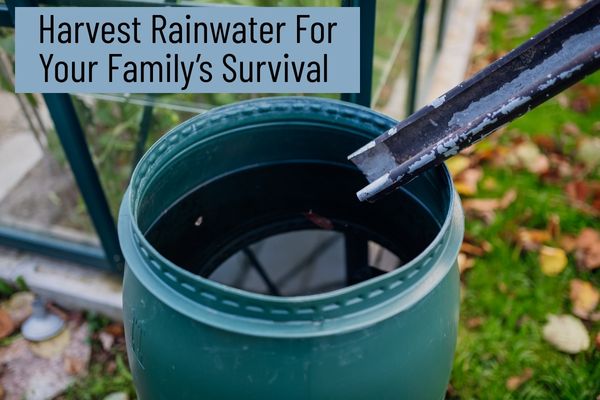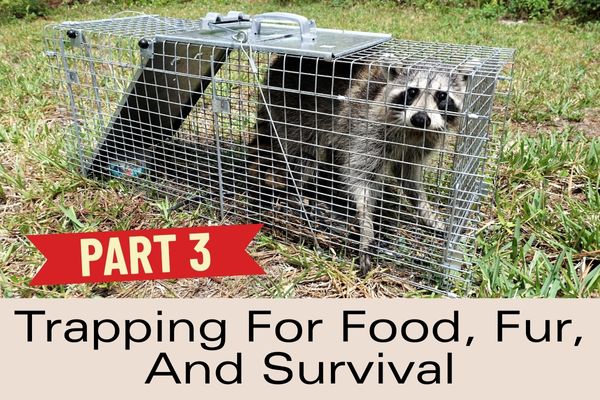Today, rainwater harvesting is often associated with a prepper movement.
But rainwater harvesting is one of the oldest practices of recorded civilization. Ancient islamic texts emphasized water conservation … the very shape of ancient cities were set up to facilitate it.
In the rural Chinese countryside, ceramic jars and stone reservoirs were integrated with the feng shui.
Mayans took it a step further, integrating underground bottle-shaped cisterns lined with plaster into their city plans. In the middle ages, English and Germans began using rooftop water collection, storing rainwater in wooden barrels for home use. Then, as the colonial era kicked off, homesteaders in arid regions used cisterns as centralized water systems.
In fact, it’s only in the 20th century that rainwater harvesting began to decline in urban areas. Today, paranoia around water scarcity has driven a global resurgence in the practice. Decentralized systems promoting sustainability, resilience and self-sufficiency abound. But what is the advantage of your being able to harvest drinkable water?
A safe source of drinking water is essential should disaster strike. This article will teach you how to identify safe sources of drinking water and utilize them to the maximum in dire situations.
Harvesting and storing rainwater is critical for preppers, especially in long-term off-grid or grid-down scenarios. Here’s a complete breakdown of how to harvest and store rainwater safely and efficiently:
There are many misconceptions about what rainwater harvesting is … it’s variations … and how it can be useful in your prepping efforts.
First, rainwater harvesting involves collecting runoff from rooftops or tarps and storing it for later use. It’s ideal because:
America’s water infrastructure (pipes, treatment plants, pumps) is dangerously outdated. In some cities, water mains are over a century old and leak thousands of gallons a day. Towns like Jackson, Mississippi have suffered complete system failures, where people were told to boil or avoid water for weeks. In Flint, Michigan, and other cities, entire communities were exposed to lead-contaminated water because of corroded pipes and mismanagement.
More recently, even larger, wealthier cities are issuing “boil water” notices after flooding, pipe failures, or storms. For people relying solely on public water, these breakdowns may spell out hardship. This is why more people are installing rain barrels, storing drinking water, or digging wells.
Climate Change Is Pushing Systems Past Their Limits
Climate-driven disasters (record floods, hurricanes, droughts, wildfires, and heatwaves) expose how fragile the U.S. infrastructure really is. Many water treatment plants and electrical substations were not built to withstand these extremes. Roads and bridges buckle under heat stress or wash away in floods. Emergency services are often overwhelmed or slow to respond.
Supply Chains Are Fragile
The pandemic exposed how vulnerable the supply chain really is. Grocery shelves went empty—not just from panic buying, but because warehouses, trucking systems, and labor forces were stretched thin. That means supplies of bottled water could be compromised. And the supply of water on grocery shelves that we always took for granted could “dry” up.
So, having the skills and knowledge to harvest water could become an absolute necessity.
ROOF-BASED COLLECTION SYSTEMS:
:: Uses gutters and downspouts to divert water into tanks and barrels.
:: Clean, sloped roof (metal or tile preferred; avoid old asphalt shingles or treated wood)
:: Gutters must be clean and in good condition
:: Gutter guards or mesh screens on gutters will help keep collected water clean and debris free.
TARP OR RAIN CATCHER SETUP:
A tarp or rain catcher is a good solution when mobile or practicing bushcraft.
Suspend a clean tarp at an angle to capture rainwater into a container or funnel.
OPTIMIZATION:
Within these systems, there are various ways to optimize:
The first flush system diverts the first gallons of rainwater into a constructed well, often built of a PVC pipe. This allows bird droppings, debris, & roof contaminants to collect at the bottom of the well, instead of ending up in your water supply. After a rain fall, open of the bottom of the PVC well to let the particulate matter and debris escape. With a first flush system, the water you collect will be cleaner, more drinkable, and need less filtering and purification.
After rainwater has been harvested, it has to be safely and properly stored.
The first is food-grade barrels (can hold up to 55-gallons). I found a 55 gallon blue water barrel available on Amazon.com for $135.99. It’s important to use opaque barrels to block sunlight and reduce algae buildup.
IBC (Intermediate Bulk Containers) totes) are great for high-volume storage (275 gallon and 330 gallon caged IBC tote are the types most used by homeowners). The commonly used caged IBC tote is a translucent container and is most often used to hold water. Translucent containers make it easy to see fluid levels within tanks But that same translucency can create a problem … the growth of algae. IBC totes allow a significant amount of light through their sidewalls. And those two elements … sunlight and sitting water, help algae grow; and that’s not good for a healthy supply of drinkable water. When placing an IBC tote for home use, place it out of direct sunlight. Plus, one can modify the container to help shield the water from sunlight.
Successfully harvesting and storing rainwater is a potentially lifesaving start. But to have complete peace of mind, the water needs to be tested and possibly purified.
Water can go bad if its not handled properly. Use these strategies:
Pre-filtration: Mesh screens, sand filters, and gravel filters can remove debris.
Disinfection (before drinking):
>> Boil (rolling boil for 1-3 minutes)
>> UV treatment (solar water disinfection/SODIS or UV light)
>> Chemical (chlorine and iodine)
>> Filters: Use high quality systems like Berkey, Sawyer, or LifeStraw Family for final stage filtering.
Storage maintenance:
>> Keep barrels covered tightly.
>> Store in shady or cool areas to reduce bacterial growth.
>> Clean tanks annually with vinegar or a weak bleach solution.
Finally, it’s important to note that rainwater harvesting looks totally different depending on which region you’re in.
Southwest
One of the most popular regions for rainwater harvesting. Since this area gets less rainfall, there’s less room for mistakes. Conserving water in the southwest is often part of everyday life.
Features:
:: Roof catchment systems are common in rural areas and some urban areas.
:: Cisterns, underground tanks, and passive earthworks (like swales or berms) are used to slow and sink runoff.
:: Cities like Tucson offer rebates and incentives for rainwater harvesting.
Pacific Northwest
This region receives a lot of rain—sometimes too much at once. So rainwater harvesting can sometimes be more about about stormwater management and reducing runoff and less about scarcity.
:: Rain barrels and cisterns help prevent basement flooding and reduce strain on storm drains.
:: In rural areas, harvested rainwater is sometimes treated for drinking, especially on off-grid properties.
Southeast
This region gets abundant rainfall and deals with frequent flooding and stormwater runoff. Water costs are relatively low, but soil erosion and urban runoff are big issues, making rainwater harvesting useful for managing water locally.
:: Rain barrels are promoted for reducing stormwater runoff from roofs and driveways.
:: Systems are usually simple, low-cost, and above ground.
Northeast
Rainfall is fairly consistent year-round, making harvesting rainwater a very productive practice.
Midwest
Rain is fairly regular. Rainwater that is harvested can give your family a good supply of drinkable water while also providing water to be used in a garden that could provide food.
Mountain West and High Plains
Rainfall is low, snowpack is unreliable, and water rights laws are often strict. In places like Colorado, it was historically illegal to collect rainwater due to downstream water rights. That’s changed, but the legacy of those laws still affects public awareness.
:: Some off-grid homesteads and ranches invest in large, legal catchment and purification systems.
No matter where you are, rainwater harvesting is a very robust field, which boasts both an extensive history, and a diversity of ways to start. One does not need to invest an arm and a leg today to take the first steps to prepare for a world in which public water supply is no longer available. The first step, as always, is being informed of your options.




